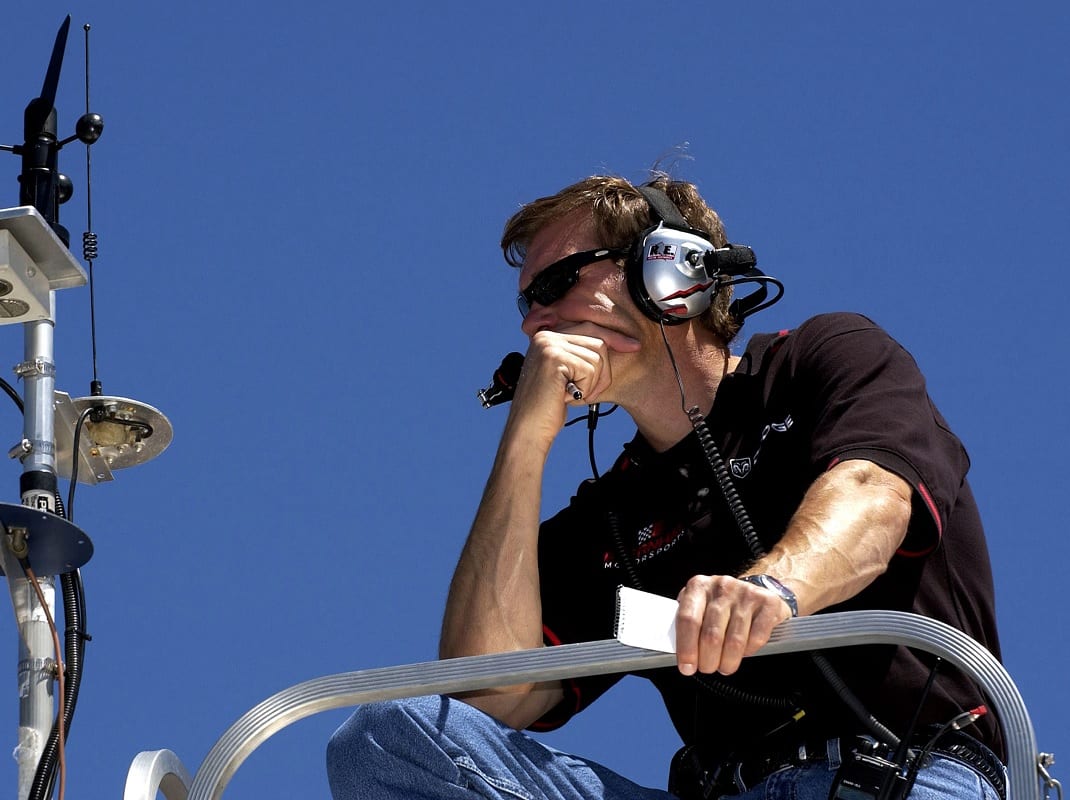It’s difficult to tell which is higher: the number of trophies in Ray Evernham’s collection, or the number of careers in which Evernham has excelled.
He’s been a NASCAR modified driver, International Race of Champions chassis specialist, NASCAR Cup Series championship-winning crew chief, race-winning NASCAR team owner, acclaimed ESPN broadcaster and Motor Trend television show host.
In 2018, Evernham’s legacy of success earned the 63-year-old an induction into the NASCAR Hall of Fame, an honor Evernham calls his crowning achievement.
The Hazlet, N.J., native is embarking on another new journey next year, when Evernham and Tony Stewart roll out the Superstar Racing Experience — a venture unlike anything Evernham has ever tried.
Evernham will design the cars in which world-class drivers such as Stewart and Helio Castroneves will compete on short tracks across the country. CBS agreed in July to become the broadcast home of Superstar Racing Experience’s 2021 events.
Evernham sat down with SPEED SPORT to discuss SRX’s background, fan appeal and his vision for how the first season will unfold. Here’s what Evernham, long known as one of motorsports’ hardest-working personalities, had to say.
Q: Having worn so many different hats in motorsports, was starting a racing series the logical next step for you?
EVERNHAM: I look at (SRX) as not really a racing series so much as a motorsports entertainment platform. It was really about reaching out to the fans and to the core of our sport, the DNA if you will. It’s about driver talent. It’s about drivers muscling cars around on short tracks and people buying tickets to see drivers do things better than we can, right? That’s what we want to see — the pureness of our superstars without their ability being clouded by technology or rules.
(The driver’s) part of the formula is smaller than it was when it was purely about driving, so we wanted to bring that back. I’m a core motorsports fan and that’s what I hear the core motorsports fan in general wants to see, without it being so complicated by wind tunnels and simulations — taking it back to Foyt vs. Andretti or Petty vs. Pearson. They’ll be in fast cars that probably aren’t going to handle that well, to tell you the truth. Guys will learn how to drive them with the steering wheel, gas pedal and brake.
Q: From a technical perspective, how can SRX put the racing back in the drivers’ hands?
EVERNHAM: We take away downforce, we give back some power and we put them on a narrower tire — more like what you’d run on the street. Tires have gotten so good, it’s incredible. We’ll reduce the speed, put them back on smaller tracks and bring the springs, shocks and suspension geometry more into the picture. By doing that, it means your gas pedal, brakes and steering wheel are more effective to the things the driver can correct. It puts a lot of driver ability back into the situation.
Q: Where did the idea for the Superstar Racing Experience originate?
EVERNHAM: George Pyne, when he was at NASCAR, he and I became friends. We’ve been friends for 20-plus years and we’ve talked about several different things, forms of motorsports entertainment throughout the world. George moved off to his own situation with Bruin Sports Capital and with one of his partners, Sandy Montag of The Montag Group in New York, we started batting it around a bit more seriously. Watching all the great success that IROC had in the 1970s and 1980s and then watching what happened to them in the 1990s and 2000s and why it went up and down, the world’s changed. Racing has changed. The fans’ interests have changed. They want shorter shows that are more focused on driver talent, going back to the short tracks where our superstars grew up. We really designed this for fan entertainment. They don’t have to worry about a bunch of rules and regulations. I think the 21st-century motorsports audience is ready for something like this. It’s driver vs. driver. We’re going to have a champion, without a doubt, but our points system is going to be about as simple as it could possibly get.
When you look at where people are with cars and motorsports, drivers have become more available and retirements have come younger and younger. We’re going to use drivers who love to race, but maybe they don’t want to race 30 times a year anymore. We’ve announced (NASCAR champions) Tony Stewart and Bobby Labonte and (Indy 500 winners) Tony Kanaan and Helio Castroneves. We’ll have drivers from different backgrounds. The driver interest has been crazy. We’ve already had 19 drivers apply for 12 seats. Sean McManus, our partner from CBS, heard our list and told me, “Wow. That’s pretty impressive.” You know, SRX is going to build its own cars, too. We’re not going to have a manufacturer. They’re going to be SRX race cars — not stock cars or Indy cars. We’ve had so much interest, we’ve already been asked if we can go to more than 12 cars and drivers. My answer is always, “We can go to however many you like. It’s just time and money.”
To continue reading, advance to the next page.
